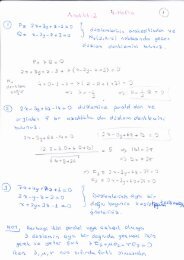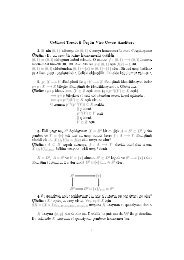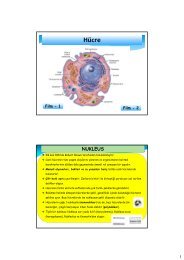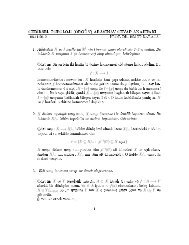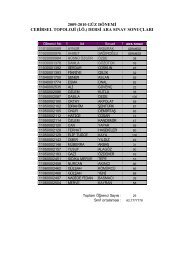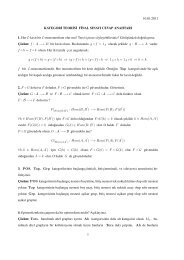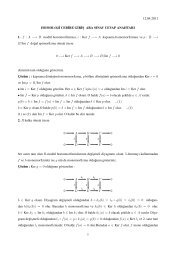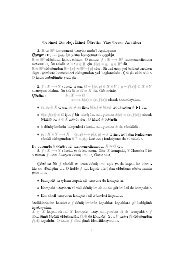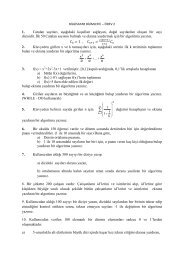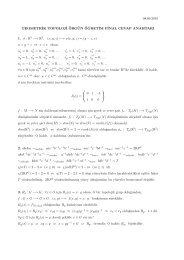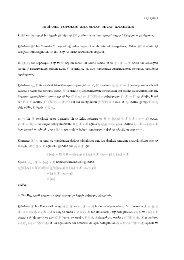MCS 351 ENGINEERING MATHEMATICS SOLUTION OF ...
MCS 351 ENGINEERING MATHEMATICS SOLUTION OF ...
MCS 351 ENGINEERING MATHEMATICS SOLUTION OF ...
You also want an ePaper? Increase the reach of your titles
YUMPU automatically turns print PDFs into web optimized ePapers that Google loves.
g(z) =<br />
sinh πz<br />
z 2 − 3z<br />
=<br />
sinh πz<br />
z(z − 3)<br />
Singular points of g are z 0 = 0 and z 1 = 3. Let D be the union of C and the interior part of C. Then<br />
z 1 = 3 /∈ D but z 0 = 0 ∈ D. f(z) =<br />
we get<br />
12.<br />
∮<br />
C<br />
∮<br />
g(z)dz =<br />
C<br />
sinh πz<br />
z−3<br />
is analytic in D. Hence by use of Cauchy integral formula,<br />
sinh πz<br />
z − 3 .1 0<br />
dz = 2πi.f(0) = 2πisinh<br />
z −3<br />
= 2π sin(i.0) = 0<br />
−3<br />
Let g(z) = tan z<br />
z−i . Singular point z 0 = i is enclosed by C. f(z) = tan z is analytic in D when D is the<br />
union of C and the interior part of C. So by the use of Cauchy integral formula, we get<br />
∮<br />
tan z<br />
dz = 2πi tan i<br />
z − i<br />
13.<br />
C<br />
g(z) = e−3πz 1<br />
2z + i = 2 e−3πz<br />
z + i 2<br />
Singular point z 0 = − i 2 is enclosed by C. f(z) = 1 2 e−3πz is analytic in D when D is the union of C and<br />
the interior part of C. So by use of Cauchy integral formula, we get<br />
∮<br />
e −3πz<br />
1<br />
2z + i<br />
∮C<br />
dz = dz = 2πi. 1 2 e− 3 2 πi =<br />
2 e−3πz<br />
C<br />
z + i 2<br />
15. We sketch C : |z − 4| = 2 as follows:<br />
41<br />
πi<br />
3<br />
2 (cos π + i sin π) = −2 3 πi



